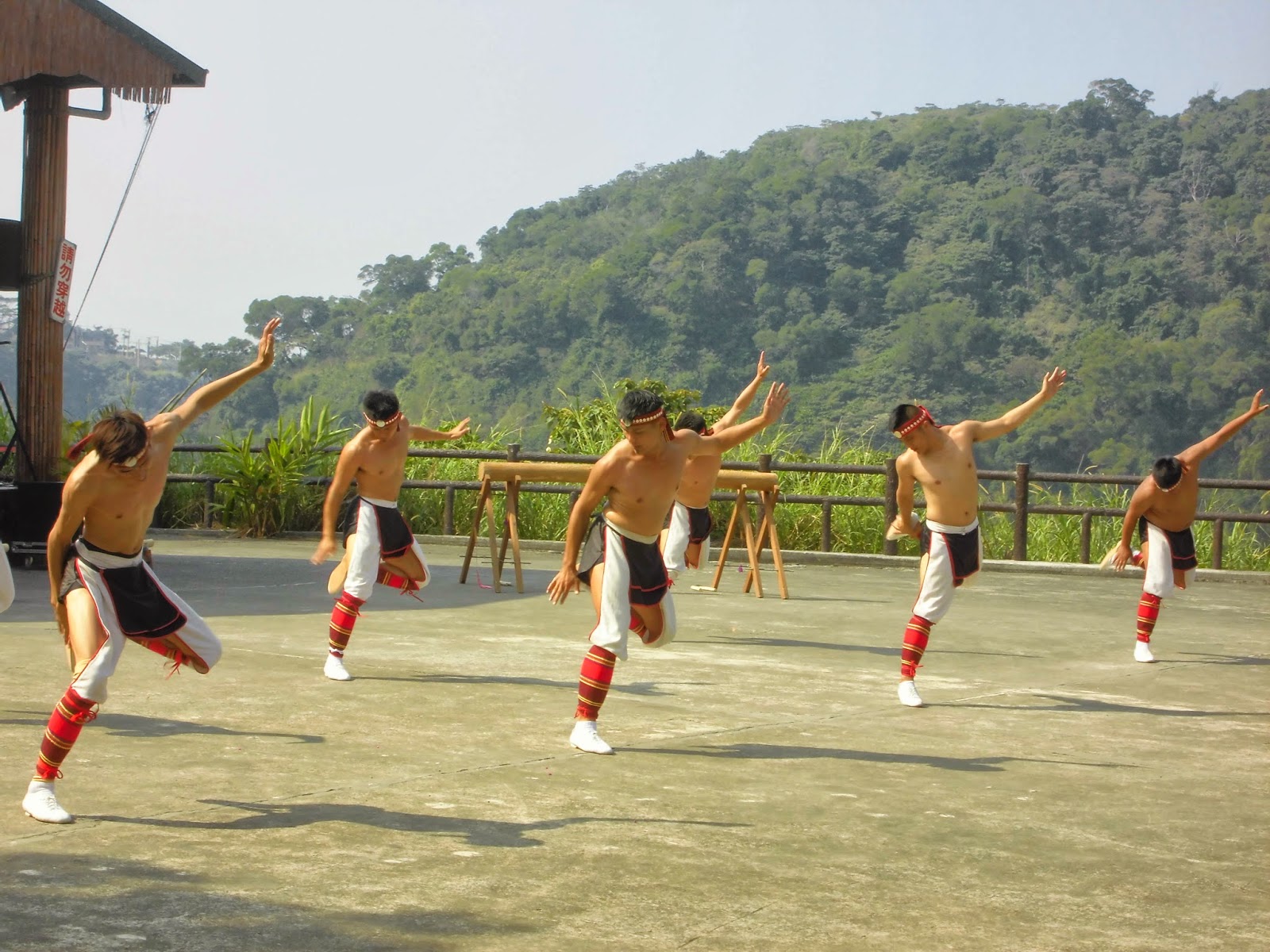REMINDER: Taiwan's Legislature is still occupied by students.
台湾の立法員はまだ学生に占拠されている。
A couple months back I went on a group trip to the Indigenous Peoples Culture Park in Pingdong. The indigenous people of Taiwan speak Austronesian languages. The Austronesian language family is one of the most wide-spread in the world. Austronesian languages are spoken in South East Asia (mostly on the islands, but there are some mainland ones as well, like Malay) throughout the islands of the Pacific, and even in Madagascar! Funny enough, despite the name "Austronesian", this language family is unrelated to the languages spoken by Australian aboriginal peoples. (The "Austro" in "Austronesian" apparently comes from the word for "south wind".) Most evidence seems to indicate that Austronesian speakers branched out from Taiwan at some point in the past, making the island of Taiwan the point of origin for this huge language family.
In modern Taiwan, people who identify as one of the aboriginal people of Taiwan are only a small percentage of the population. They've been outnumbered by the immigrant Chinese population, much like the native people of countries like the USA, New Zealand, or Canada. Also, during the Japanese period and afterwards, aboriginal languages and culture have been disfavored by the governments in favor of Japanese, then Chinese language/culture. It's only been in recent years, after Taiwan democratized, that the government has made any effort to preserve or encourage aboriginal culture. This park is one of those efforts, and the idea is that they showcase the culture of the 14 (officially recognized by the government) aboriginal groups that live in Taiwan all in one place. The park is kind of hokey--as is to be expected of a park that tries to mash all of the cultures of Taiwan together into one place--but I enjoyed watching the dancing performances.
何ヶ月前、私は学校の修学旅行に参加して、塀東にある先住民の文化公園に行って来た。台湾の先住民はオーストロネシア系の言語を喋る。オーストロネシアの言葉とは、東南アジアをはじめ、太平洋の諸島、マダガスカルに至って広がっている語族だ。実は言語学の研究によると、この語族の起源は台湾とされている!
しかし、現在台湾の先住民は人口の2%ぐらいに過ぎない。人口は17世紀以来の中華系の移民に追い越されて、アメリカやニュージーランドや北海道などの先住民の様に、自分の文化や言語などが新しく入ってきた民族に圧迫されているという状態に陥っている。そのうえ、日本時代から中華民国時代にかけて、二つの政府は両方とも先住民の文化や言語などを拒否して、日本語、そして中国語を勧めたわけだ。最近、民主主義に替わった台湾では、政府はやっと先住民の言語などを保存しようとすることにしてきた。この文化公園もそういう施設一つだ。政府が認める14族の民族はそれぞれ文化が違うので、この施設は無理があるが、それでも踊りを見るのは面白かった。
幾個月前,我跟華語中心去屏東的原住民族文化園。臺灣的原住民各有各的語言,但是全部都算是南島語系的語言。這個語系涵蓋很寬廣的地方,包括東南亞(尤其島嶼),太平洋的島嶼,然後也到馬達加斯加。其實,按照最近語言的研究,南島語系都原來從臺灣出發了。
可是,現在臺灣的原住民只是差不多人口的2%而已,他們的文化,語言被更多的華人壓住了。以前日本政府,然後中華民國的政府兩個都推薦大家都用日文,然後中文來交通,所以很多原住民的語言已經沒有了。但是最近臺灣的政府對中文以外的語言沒有以前那麼嚴格的態度,也開始推薦原住民的語言,或是文化保存。聽說這個園也是一個那種的設備。
The first thing we saw upon arriving was a show of various traditional dances done in traditional clothes. The whole thing was arranged into one big continuous dance where the dancers kept changing costume throughout.着いたら最初に民族舞踊を見た。踊り手は一時間ぐらい踊り続けて、衣装を着替えながら、それぞれの民族の舞踊を発表してくれた。
我們到了就馬上去看傳統的舞蹈。
Goat statue
本物じゃなくて、石像だ。
Some sort of adorable bird was hopping around.
可愛い鳥がこの辺で跳んでいた。
這隻可愛的鳥在這邊跳來跳去。
I think this is a breadfruit tree.
これはたしかパンノキだと思う。
麵包樹。紐約沒有,所以我覺得它的樣子很有趣。
We tried out bow shooting. Most people's results were hilariously awful.
弓矢の体験もあった。
經驗用弓箭來射。
A top
こま
Design on a bench.
ベンチにあったデザイン。
板凳的模樣。
Abandoned toilet?
ツッコみたくなるぐらい存在が不思議なトイレ。
為甚麼這裡有馬桶?
Some cool, red bug
赤い虫
好酷的蟲子
Watching the sunset on the bus ride home.
帰りの日暮れ
在回家看到的落日。



















































